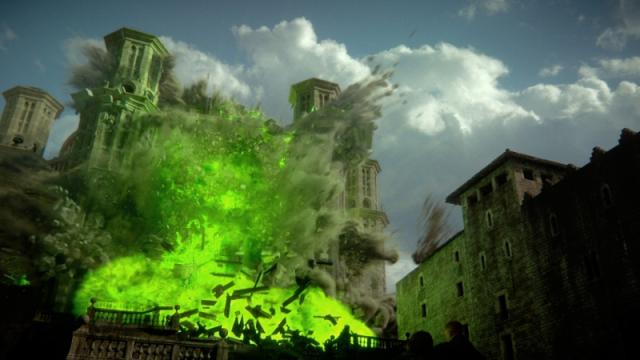All Image and Stills: HBO
Game of Thrones is an incredibly dense show, filled with hundreds of characters, families, legends, and everything else under the realm’s sun. With all the information fans have had to absorb over the years, it’s easy for some things to fall on the wayside. That includes the show’s plethora of religions.
As season 7 promises a major power shift in Westeros, here’s a guide to all the major religions of the realm and what role they could play in the series moving forward — as well as some of the smaller and oft-forgotten beliefs from A Song of Ice and Fire that play a bigger role in Game of Thrones than we might realise.

The Big Three
Currently, there are three primary religions in the world of Game of Thrones. These are the ones that are both popular and widespread through the realm and have played the most vital roles in the lives of our main characters. While their futures are uncertain, especially as some have cursed the gods to serve their own ends (I’m looking at you, Cersei), it looks like the battle for the Iron Throne will be just as much a war of faith as it is of power.
1) The Old Gods

Location: The North, Beyond the Wall
The old gods are a nature-based, animalistic religion. There are no priests, temples, or holy scripture — the gods don’t even have names. Rather, they’re seen as part of the earth, manifesting in the trees, stones, water, and animals. For example, Osha invoked them with Bran Stark after hearing the wind blow, saying the gods were communicating with him. The religion doesn’t have specific rules, but followers are expected to be generally good people. Certain actions are seen as offensive to the gods, while the rules of hospitality are basically sacred. (Walder Frey missed that one, it seems.)
The old gods were the first major faith of Westeros, worshipped by the Children of the Forest, the nonhuman inhabitants that originally inhabited continent. The First Men — the first human inhabitants — converted after they arrived from Essos. The Children were the ones who carved faces into the weirwood trees, presumably to help “greenseers” commune with the gods. Greenseers were their closest thing to religious figures, as they had the gift of second sight, along with prophetic dreams and warging. Bran and Jojen Reed have shown some of these abilities.
Worship of the old gods has largely faded, after the human Andals invaded and forced the Westerosi to convert to the Faith of the Seven. However, the religion isn’t banned, and is still acknowledged by the rulers of Westeros. It’s currently practiced by families in the North, notably the Starks, as well as the wildlings beyond the Wall and the surviving Children of the Forest.
2) The Faith of the Seven
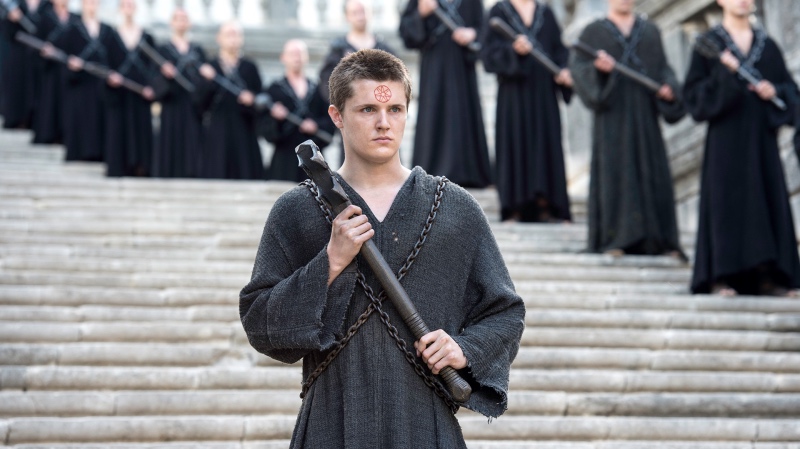
Location: Most of Westeros
The Faith of the Seven, also known as the New Gods or simply the Seven, is the closest thing A Song of Ice and Fire has to an established state religion. It’s got more than a few parallels to Catholicism. Much like the Holy Trinity (the Father, the Son, and the Holy Ghost), the religion believes that there are seven unique aspects of a single god. Father, who represents judgement; Mother, for motherhood and fertility; Warrior, depicting strength; Maiden, representing chastity; Smith, for crafts and labour; Crone, the figure of wisdom; and the Stranger, who represents death and the unknown. However, there are those in Westeros who treat them all as separate gods.
The Andals of Essos created the religion shortly before conquering Westeros — some believe their newly found zealotry inspired the invasion. Upon arriving, they established the Seven as Westeros’s primary religion, and it was much more rigid than the belief structure for the old gods. Temples, called septs, were erected, filled with a hierarchy of male religious figures called septons (female religious figures, or septas, usually served in noble houses). A holy text called The Seven-Pointed Star dictated rules that followers were supposed to abide by. These include condemning gambling, prostitution, homosexuality, and incest.
Like any religion, there are different interpretations and different levels of orthodoxy. Most relevant are the Sparrows, a sect that aids the poor and doesn’t let the rich off the hook simply because they are powerful. Their leader was called the High Sparrow, and he was eventually appointed High Septon. (Think Pope, to continue the Catholic analogy.) In that role, he saw the return of the Faith Militant, a religious military that had been disbanded.
The Seven has been the most widely practiced religion in Westeros for generations, but that might change soon. At the end of last season, Cersei Lannister blew up the Great Sept of Baelor, which has long served as the center of religious worship for the Faith of the Seven — it’s basically like she destroyed the Vatican. And, given part of her goal was to get rid the High Sparrow and his Faith Militant after what they did to her, it seems unlikely that she’s eager to restore the Seven’s presence in King’s Landing, or elsewhere. But the Sept’s loss is the Lord of Light’s gain.
3) R’hllor the Red God
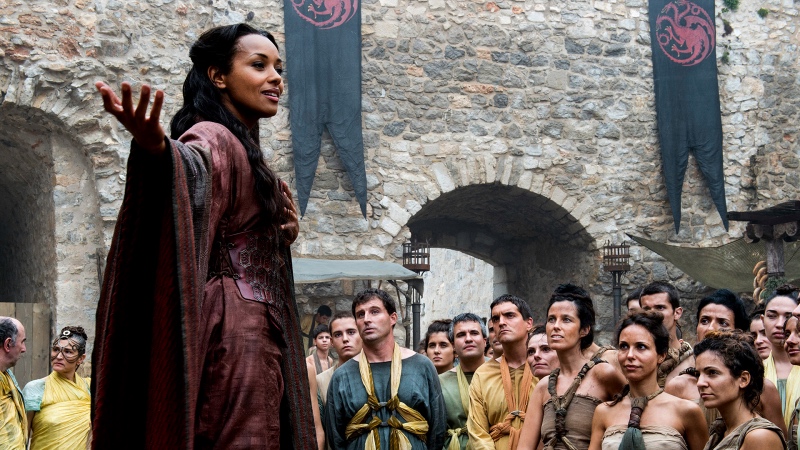
Location: Most of Essos, (formerly) Dragonstone, Hollow Hill
R’hllor, also known as the Red God, the Lord of Light, or the God of Flame and Shadow, is arguably the biggest religious figure in the realm. The Westerosi may not have heard of him (apart from Melisandre and the Brotherhood Without Banners)… but he is a huge deal in Essos, where belief stretches from the Free Cities all the way to Asshai.
Belief in R’hllor is strict and absolute, as all other gods and religions are considered false. When we first meet the red priestess Melisandre, she’s burning the Seven in effigy, and so-called blasphemers have been maimed and killed for opposing the Lord of Light. However, it’s not without merit, as clergy (red priests and priestesses) appear to be granted with magic that can resurrect the dead, cast glamours and illusions, and create killer smoke vagina monsters.
While belief in R’hllor is considered a monotheistic religion, it’s also dualistic in nature. Much like the war between Judeo-Christian figures God and Lucifer, the belief is that R’hllor has been in an everlasting battle with the Great Other, an evil god of ice and death. They believe that the White Walkers have been sent by the Great Other to bring destruction to the world, and only the prophesied hero Azor Ahai can stop them.
It’s clear R’hllor is going to play a major role this season — and that’s not just because Samwell and Gilly are clearly researching the Azor Ahai mythos in an upcoming episode. With the Faith of the Seven in trouble after Cersei’s destructive power play, Daenerys bringing the might of Essos to Westeros, and Jon Snow serving as proof that R’hllor’s magic might very well be real, this could turn out to be not just a battle for the Iron Throne but for the future of faith. After all, if the Lord of Light has a solid plan to defeat the White Walkers, it might be worth converting.
Smaller Faiths
There might be three main religions fighting for dominance in the realm, but they’re not the only belief systems out there. There are a few other religions that are smaller and more isolated than the Big Three, but they have served an important purpose in the series. Whether it’s coaxing a character to change their fate, like Theon Greyjoy, or laying the foundation for a prophecy that could shape the future of Westeros.
1) The Drowned God
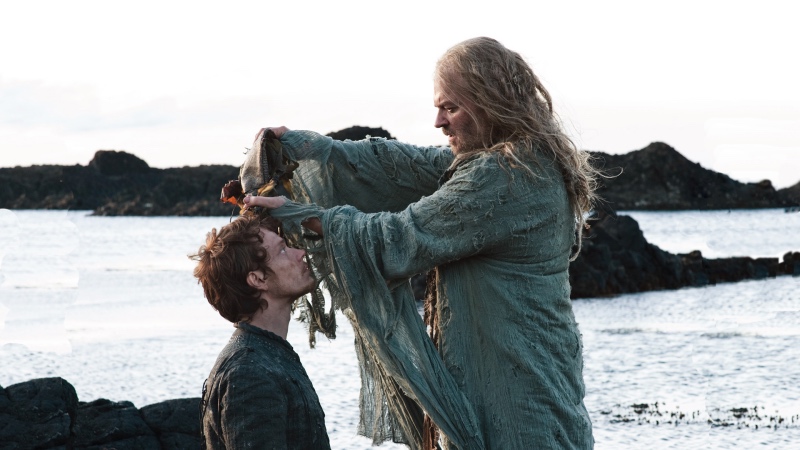
Location: Iron Islands
George R.R. Martin has expressed that the ironborn are inspired by ancient Vikings, and the Drowned God is loosely based in Norse mythology. Followers say the Drowned God created the “ironborn” people to raid and pillage, and their belief system justifies their generations-long legacy of piracy. For an ironborn, paying for possessions is considered sacrilegious, as it’s more honorable to kill someone and take what they own by force.
The Drowned God’s religion puts emphasis on resurrection and baptism, with kings literally drowned and left to revive themselves before they can take the crown. And much like R’hllor, belief in the Drowned God is dualistic, as he’s locked in an eternal struggle against the Storm God, who lives in a castle in the sky. However, it differs from the Lord of Light in that only men are allowed to be in the clergy (called the Drowned Men), as their society believes in traditional gender roles… with the exception of Yara, of course.
2) The Many-Faced God
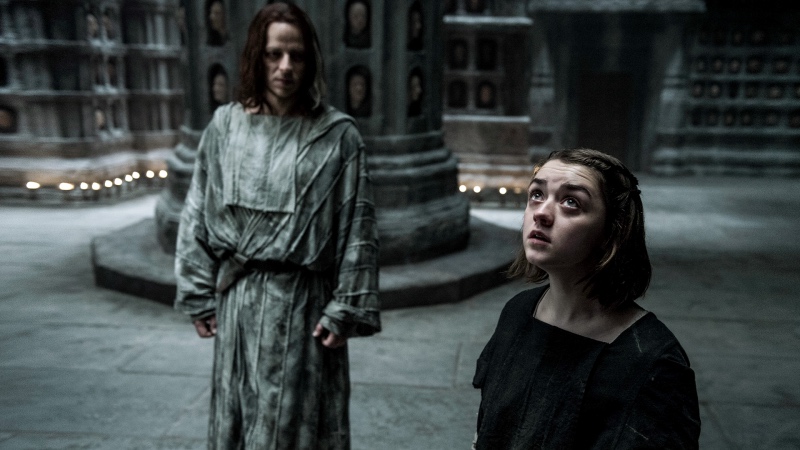
Location: Braavos
The Many-Faced God, also known as Him of Many Faces and the God of Death (though not in the books), is a deity unique to Braavos — specifically, the Faceless Men. It’s a syncretic religion in that followers honour figures of Death from various religions, believing that Death is the only true god but it can be prayed to in any existing form. These forms include the Drowned God, The Seven’s Stranger, R’hllor, the Black Goat (worshipped in Qohor), the Weeping Woman (from Lys), and even the old gods.
The Faceless Men believe that Death is a gift, mercifully killing those who seek to die, and fulfilling assassination contracts since Death selected those people to be killed. This belief system actually originated in the slave mines of Valyria. The thousands of slaves who constantly faced their own demise created a religion that combined all their different beliefs under one guiding principle: Death is inevitable. It’s rumoured those slaves caused the Doom of Valyria, but it’s impossible to know for sure at this point.
3) Great Stallion
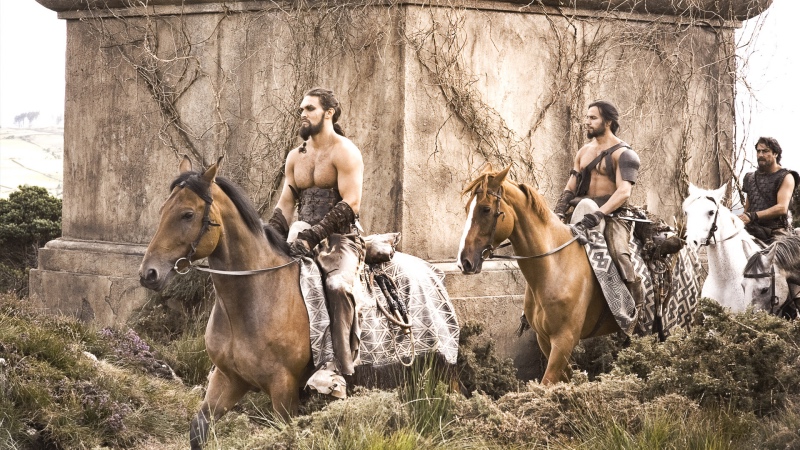
Location: Dothraki Sea
The Great Stallion was an important religious figure in the first season of Game of Thrones, as Daenerys first adjusted to life as a khaleesi. The Dothraki worship a horse god, named the Great Stallion in the show, representing the role horses play in their lives and culture. Their belief is described as henotheistic, like Hinduism, in that they recognise other gods exist but they don’t follow them. But if they conquer a city and capture or destroy its religious statues, they see it as defeating those gods.
The closest thing the Dothraki have to clergy are the dosh khaleen, a group of wise women who are widows of khals. They are believed to have the gift of prophecy. Daenerys was temporarily sent to them after being taken captive in season six, leading to her destroying the Dothraki leaders and taking command of the entire horde. This could be related to the Dothraki prophecy of the Stallion Who Mounts the World, who they believe will unique all the tribes and conquer the world. Khal Drogo originally thought this was his unborn son, but it could be Daenerys herself.
Some Oft-Ignored Gods
There are several religions mentioned in A Song of Ice and Fire that have little-to-nothing to do with Game of Thrones, at least at this point. However, a few of them are connected to the series, some in ways we might not expect. They may not be directly influencing the show or its characters, but they do give a little insight into things that have happened on the show, as well as give the world a little more colour and vibrance.
1) Valyrian gods
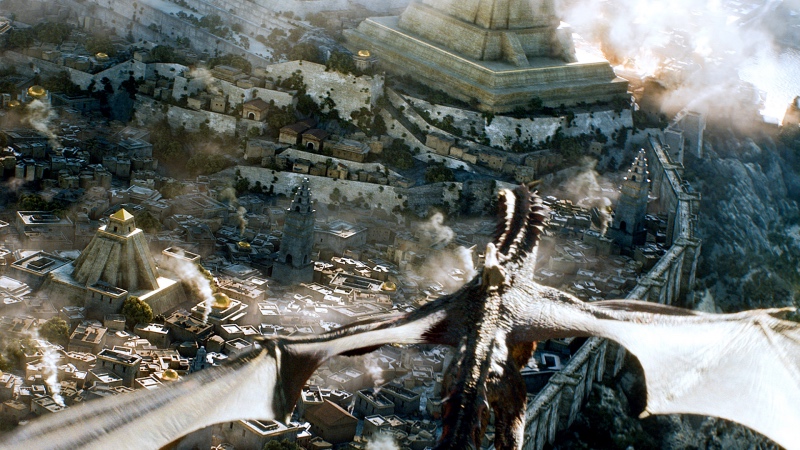
Old Valyria had a polytheistic religion very similar to the Roman Empire, and they tolerated other faiths so long as those under their control paid their taxes. The religion went nearly extinct after the Doom of Valyria, but it’s still practiced by some aristocratic families in Volantis — though Daenerys conquered the city last season, which might affect that.
2) Secret god of the Bearded Priests
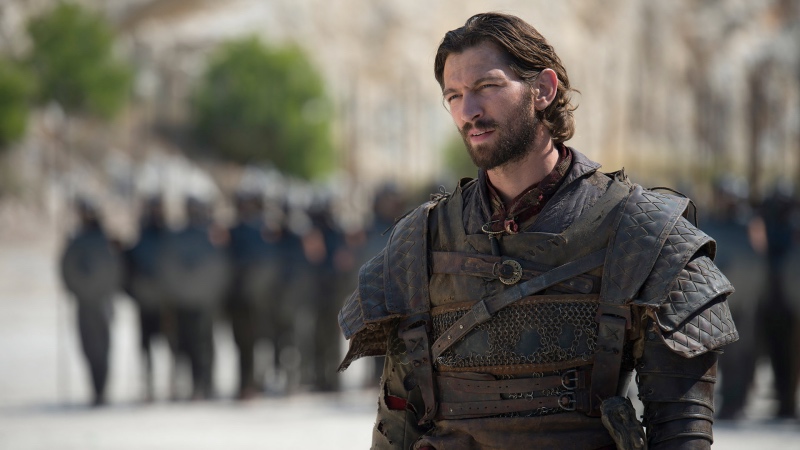
The Bearded Priests are the harsh theocratic rulers of Narvos, trained both as warriors and clergymen (Daario once told Dany that he was trained to fight like one of them). The religious order is incredibly pious and secretive — the name of the deity they worship is only revealed to initiates, so the public doesn’t even know who they believe in. It cannot even be written down except as initials.
3) Mother Rhoyne
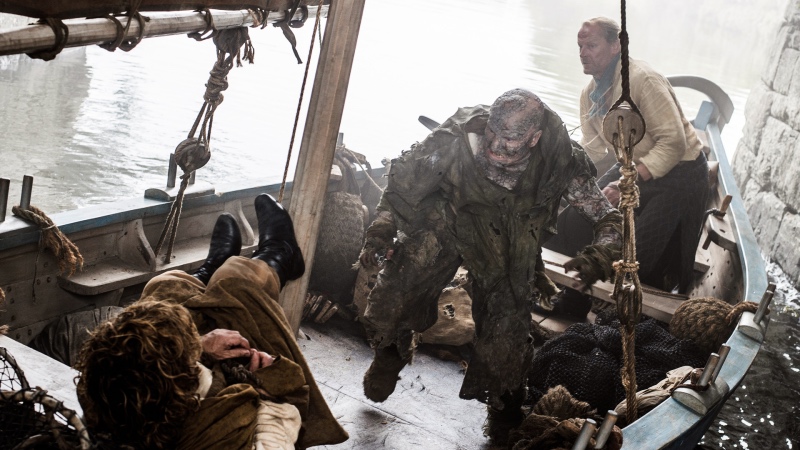
This deity is actually more important in Game of Thrones than we might realise. She’s believed to be the source of the river Rhoyne, the largest and longest river network in the realm (and yet another thing Tyrion Lannister has urinated onto, in addition to off the Wall). Believers in Mother Rhoyne, called the Rhoynar, lived on the river for thousands of years until the Valyrians nearly wiped them out. Legend has it the Rhoynar prince called upon Mother Rhoyne to curse the Valyrians for their crimes. In response, she flooded one of their cities with water and fog, making people’s skin harden and crack. This was the birth of greyscale.
4) Llazar
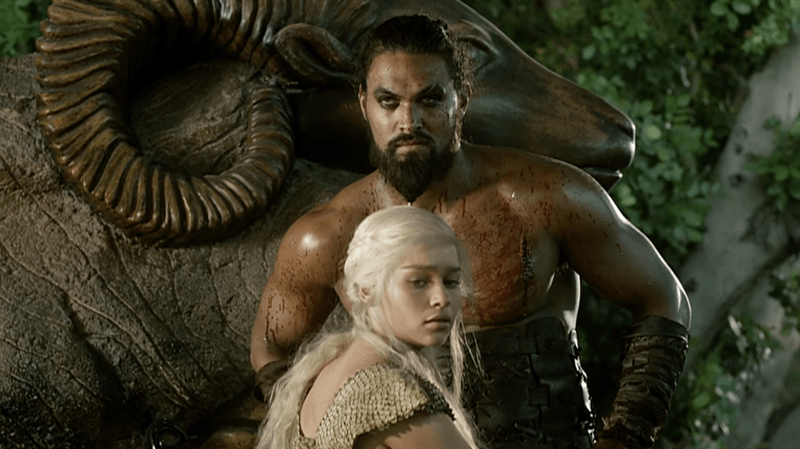
Lhazareen, the city Khal Drogo conquered in season 1, worshiped the Great Shepherd, also known as Llazar. The religion believes all men are part of one flock, meaning healers will cure anyone who needs aid, even their conquerors. However, priestess Mirri Maz Duur broke this vow when she worsened Khal Drogo’s wound, leading to Drogo’s death as well as her own.
5) The 20+ gods and goddesses of fucking
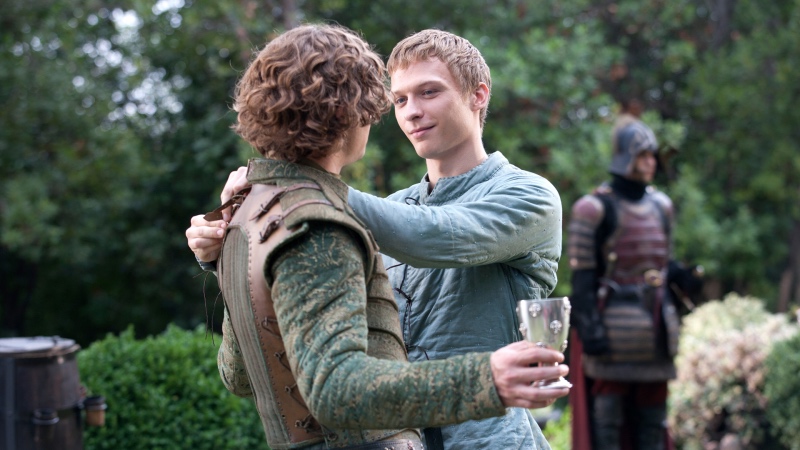
This one is just a fun bonus mention. The islands of the Summer Sea haven’t been explored in Game of Thrones, and they likely never will, but man oh man are we missing out. The islands, off the coast of Sothoryos, are all about peace, love, and good times. There are the vegetarians of Naath, who idolize a naked giant called the Lord of Harmony. Then, you’ve got the Summer Islands, where everyone worships fucking.
For them, sex is a gift from the gods that should be treasured, and they worship at least 20 gods and goddesses, including a fertility goddess with 16 teats (Varys told Tyrion about her in season 2). In the Summer Islands, prostitution is considered one of the most noble professions, and funerals are replaced with celebrations full of, you guessed it, fucking.
